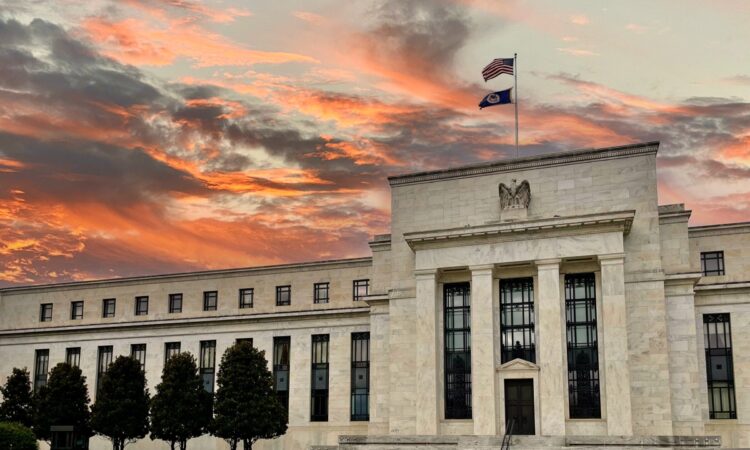
It’s been quite the time for savers.
After enduring years and years of near 0% interest rates on cash, you can now easily open a savings account or certificate of deposit (CD) that yields at least 4%, if not more. The reason: Sky-high inflation following economic lockdowns and trillions in stimulus spending caused the Federal Reserve to jack up short-term borrowing costs.
However, the days of ever-higher rates may be over. After raising rates for 10 consecutive meetings, the nation’s central bank signalled it’ll soon implement a pause. As the economy shows signs of slowing down, there’s 65% chance the Fed leaves rates unchanged in its upcoming June 14th meeting, according to the CME Group’s FedWatch tool.
However, with inflation still persistently high, don’t expect rate cuts anytime soon.
“That the Fed is still wrestling with still higher prices coupled with unambiguous indications of slower economic growth suggests that stagflation lurks within the crevices of the broader economy,” said Quincy Krosby, Chief global strategist for LPL Financial.
While high rates do not bode well for those seeking new mortgages and loans, savers can continue to benefit from these higher rates.
Fed rate hikes lead to higher CD yields
As the Fed began raising interest rates in April 2022, you were stuck with anaemic yields on your savings. For instance, a one-year CD offered just 0.15% APY, well below inflation. That’s why so few Americans bothered to purchase a CD.
All that changed after March 2022, though. As the Fed raised short-term borrowing costs, banks increased payouts to its customers in order to attract business. (To be fair, though, CD rates didn’t rise as quickly as the Federal Funds rate.)
Nevertheless, savers suddenly earned decent returns for the first time since the Great Recession. The timing helped offset the damage done by stocks and bonds nose diving in 2022.
What the Fed did at its last meeting
At the most recent meeting that ended May 3, the Federal Open Market Committee raised short-term interest rates by a quarter point to a range of 5.00% to 5.25%, the highest level since 2007 and the 10th consecutive interest rate increase.
The move was accompanied by a statement from the Fed that said future rate hikes “may” be appropriate. This is in clear contrast to former statements that unambiguously said further rate increases would occur. The implication being that the central bankers are considering pausing their streak of rate hikes at the June meeting.
“The FOMC statement was in line with market expectations,” said Jack McIntyre, portfolio manager at Brandywine Global. “Not surprisingly, there was no guarantee of a pause, but we expect that occurs at the June FOMC meeting.”
Nevertheless, the Fed is in an interesting position. Some economic signs point to trouble, such as poor manufacturing numbers. That would indicate the need for the Fed to halt hikes, if not cut them. At the same time, though, employment figures continue to show robust demand for workers. And, the strongest driver of high rates, the insidious inflation, is still well above the Fed’s preferred 2% target, especially when you strip out volatile energy and food prices.
Will CD rates rise or fall?
CD yields have climbed dramatically over the past year in response to the Fed raising interest rates. If the Fed continues in this vein, rates are likely to continue to rise, particularly on short-term deposits.
However, once the Fed pauses its rate hikes, you can expect banks to follow suit and limit CD rate increases.
It’s easy to imagine deposit yields declining if the economy falters, as investors anticipate future rate cuts. But what if the economy continues to grow and averts a recession? In that case, CD rates, chiefly longer-term rates, may start to creep up.
Why do shorter-term CDs offer higher rates than longer-term ones?
Do a little research and you’ll notice something odd: One-year CDs are yielding more than three-year ones. Typically you’d expect that to be the opposite: Banks should have to reward you more for keeping your cash tied up for longer.
That’s not the case now. Even though the Fed is raising short-term rates to moderate inflation, market participants are keeping longer-term rates in check because they think the economy will ultimately slow down.
Frequently asked questions (FAQs)
Certificates of deposit have a few key functions that can help you meet your financial needs. They are a savings product that ties up your cash for a specific number of months and yields a fixed rate of interest, usually higher than what you’ll find on a savings account. Therefore, you can enlist cash you don’t need right away to earn a better yield. (If you end up needing the money, you’ll likely pay a fee to access it.)
CDs, then, can also function as a way to incentivize you to not waste your savings. If you’re worried about your willpower to keep a big chunk of change in your savings account intact, consider using a CD as a means of self-control.
CDs and savings accounts are both savings products, but there is a key difference. CDs typically require you to lock up your cash for a period of time and, in exchange, you receive a higher interest rate than you might find on a savings account. Savings accounts, though, are liquid, which means you can withdraw your cash whenever you need it.






